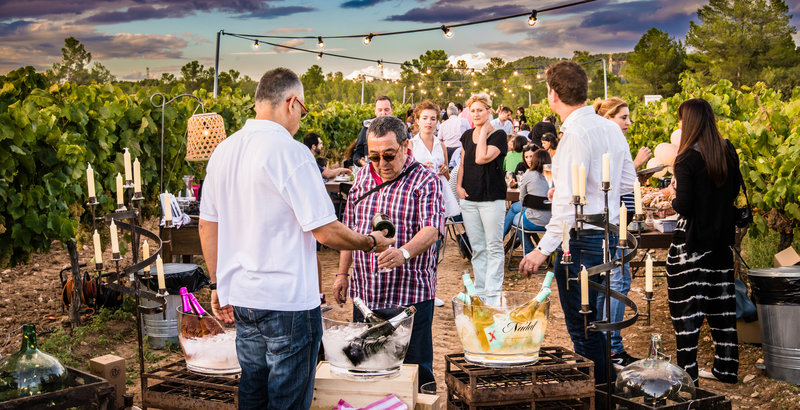Wine as an experience to remember
Increasingly more wineries around Catalonia are offering wine tourism activities as a way of promoting their products as well as adding more value to the consumer experience
Enotourism accounts for 10% of annual turnover in some wineries
Wine tourism has become one of the wine sector’s fastest growing business areas in recent years in Catalonia, with a whole new range of activities and experiences on offer to attract more visitors to the country. Increasingly more wineries see enotourism as one of the best ways of getting their products known, and what began as an added extra has become a significant source of revenue, accounting for up to 10% of annual turnover in some wineries.
The growth of wine tourism in Catalonia reached a strategic turning point in 2016, declared Gastronomy and Enotourism Year by the Catalan government. The campaign served not only to consolidate the country’s brand as a major wine producer globally but also convinced many wineries to take the plunge into wine tourism. Catalonia’s landscape, history, cultural traditions, festivals, folklore and highly-regarded gastronomy have combined to turn it into a key wine tourism destination.
One need only look at the broad and varied range of experiences now on offer, which go far beyond a tour of the winery’s facilities and a wine tasting session. Today’s visitors will find vineyard tours on Segways, itineraries by bike or on horseback, helicopter flights over the vineyards, treasure hunts, lunches with wine pairing, and grape harvesting by hand, to name but a few of the activities now offered by the country’s wineries.
Penedés, most visited
According to the latest study by the Spanish Association of Wine Cities (Acevin, in Spanish), the Penedès region is the second-most visited wine growing area in Spain after Jerez. The study reveals that almost half a million tourists visited the Penedès region last year. October is the most popular month to visit Catalonia’s largest DO (Designation of Origin) area, and each tourist spends an average of €156 a day, which includes meals and accommodation. The typical wine tourist is aged between 45 and 65, with relatively high spending power, and some 47% count themselves as wine enthusiasts. As for where these visitors are from, wine tourists from other parts of Spain still outnumber those from other countries, which means that most visits are done in a single day without the need for accommodation. Those tourists that do sleep over stay for an average of 2.5 days (especially at the weekends) and prefer to stay in rural guesthouses, apartments and mid-level hotels. Yet, the figure that perhaps says the most about the potential of the wine tourism industry is the level of satisfaction given by visitors, which last year was 8.39 out of 10.
Family activities
One factor that has helped the growth of wine tourism is its appeal to families. In the Penedès and Empordà areas wineries now offer activities aimed at children. While the parents do a tour of the cellar and attend a tasting session, the little ones learn about how wine and cava is made through games and educational activities that also often end in a grape juice tasting session. There is also a trend in joint activities for parents and children, particularly tours of the vineyards on foot or by bike.

